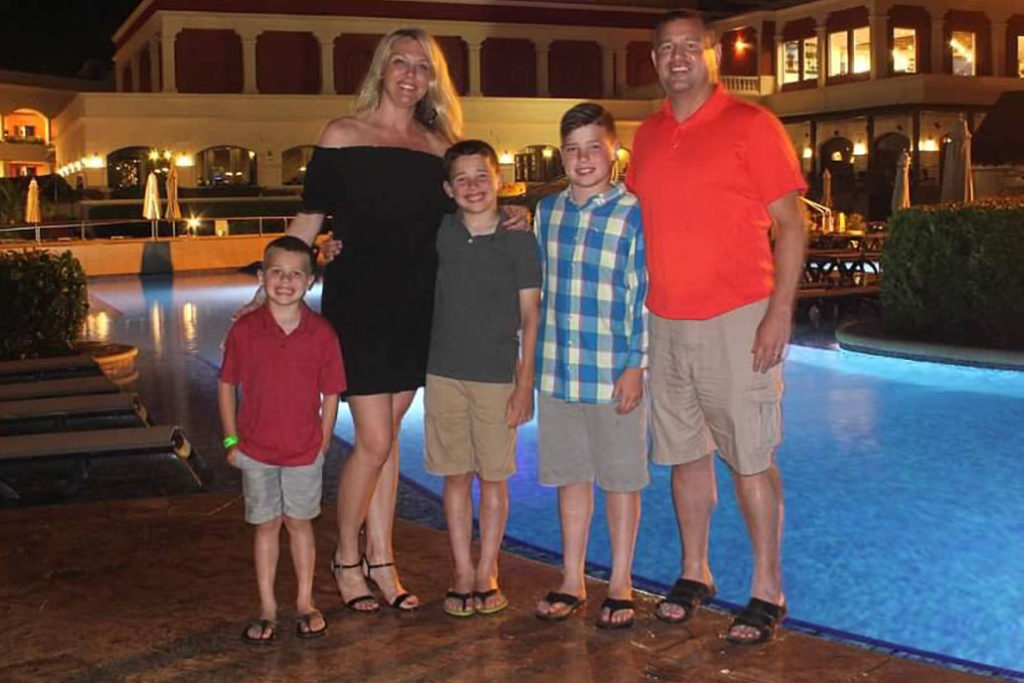The Concord Consortium’s Teacher Ambassador program commemorates our 25th anniversary by recognizing 25 outstanding teachers who have included our digital inquiry resources into their STEM classrooms. We congratulate them on their innovation and creativity.
Mason Converse, Harper Creek High School, Battle Creek, MI
Mason Converse admits that he gets a fair number of “funny looks” when he introduces himself at conferences. He’s both a science teacher and the head football coach at Harper Creek High School, which comes as a surprise to a number of people.
Mason didn’t start out as a teacher. He was an engineering recruiter, but it was tough to find enough talent coming out of colleges in the U.S. Mason figured he could make a difference getting kids excited about science by teaching the subject himself. (Mason often likes to take things into his own hands, like building his house with his wife!)

Mason Converse and family on vacation in Mexico.
One way Mason gets his 9th grade physical science and 10th grade chemistry students interested in science is through the Interactions project, which engages students in exploring curious aspects of the everyday world and discovering how the unseen world of atomic-level interactions and energy transformations are responsible for much of what we observe around us. Mason has collaborated with the Concord Consortium and the CREATE for STEM Institute at Michigan State University to help shape the Interactions curriculum, and has co-presented with our joint teams at the National Science Teachers Association conference.
He is thrilled that teachers no longer give answers to students, instead insisting that students figure things out for themselves. “It’s so incredibly powerful,” he says. “We have to make the conscious decision every single day to make kids prove to us what they know.” But he’s confident that there’s a huge payoff, and he’s quick to list examples.
First, there was the time his students put a large beaker over a flame and it kept going out. As the students kept re-igniting the burner, they said, “Stop doing that. You’re taking the oxygen away.” Finally a student said, “Hey, if it’s producing oxygen as a product, then it shouldn’t be going out, should it?”
Then there was the case of a student who had taken chemistry as a sophomore in another high school, then enrolled in Mason’s physical science as a junior. One day she yelled out, “Oh wait! All these +’s and -‘s that we’ve been talking about for this whole semester so far… is that the reason why atoms bonded in chemistry? Is this how atoms get a +1 or -1 charge? Suddenly everything makes so much more sense to me from last year! I wish we would’ve gone down to the particle level last year.”
He is most excited about how educators in today’s classrooms are changing how they teach, including teaching students to think, analyze, and argue with data. Mason’s students use data from readings, labs, and simulations—it has to be something from class. He explains, “That does two things. It makes them connect what we do in class to real scenarios and also makes them practice arguing a point with data.” He has also partnered with the English department on argumentative writing. He says it’s important to understand that “we are no longer teaching factory workers. We must encourage kids’ creativity and thinking ability instead of squashing it.”
Favorite ice cream: Lemon